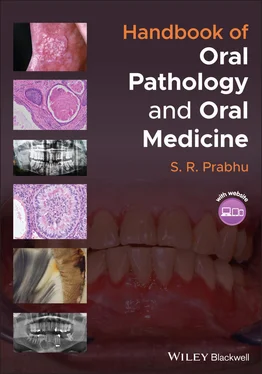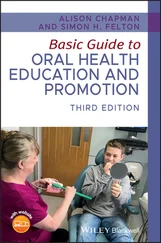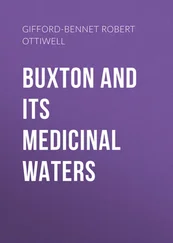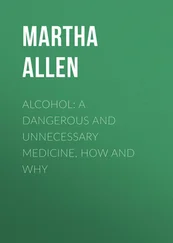S. R. Prabhu - Handbook of Oral Pathology and Oral Medicine
Здесь есть возможность читать онлайн «S. R. Prabhu - Handbook of Oral Pathology and Oral Medicine» — ознакомительный отрывок электронной книги совершенно бесплатно, а после прочтения отрывка купить полную версию. В некоторых случаях можно слушать аудио, скачать через торрент в формате fb2 и присутствует краткое содержание. Жанр: unrecognised, на английском языке. Описание произведения, (предисловие) а так же отзывы посетителей доступны на портале библиотеки ЛибКат.
- Название:Handbook of Oral Pathology and Oral Medicine
- Автор:
- Жанр:
- Год:неизвестен
- ISBN:нет данных
- Рейтинг книги:5 / 5. Голосов: 1
-
Избранное:Добавить в избранное
- Отзывы:
-
Ваша оценка:
- 100
- 1
- 2
- 3
- 4
- 5
Handbook of Oral Pathology and Oral Medicine: краткое содержание, описание и аннотация
Предлагаем к чтению аннотацию, описание, краткое содержание или предисловие (зависит от того, что написал сам автор книги «Handbook of Oral Pathology and Oral Medicine»). Если вы не нашли необходимую информацию о книге — напишите в комментариях, мы постараемся отыскать её.
Discover a concise overview of the most common oral diseases in a reader-friendly book Handbook of Oral Pathology and Oral Medicine
Handbook of Oral Pathology and Oral Medicine
Handbook of Oral Pathology and Oral Medicine — читать онлайн ознакомительный отрывок
Ниже представлен текст книги, разбитый по страницам. Система сохранения места последней прочитанной страницы, позволяет с удобством читать онлайн бесплатно книгу «Handbook of Oral Pathology and Oral Medicine», без необходимости каждый раз заново искать на чём Вы остановились. Поставьте закладку, и сможете в любой момент перейти на страницу, на которой закончили чтение.
Интервал:
Закладка:
The most prevalent type of tooth wear is attrition, followed by abrasion and erosion
4.1.3 Aetiology/Risk Factors
Attrition is the physiological wearing of the tooth due to masticatory forces
Bruxism is a known cause of attrition
Abrasion is caused by abrasive dentifrices, cigars, pipes, smokeless tobacco use, improper tooth brushing techniques, and inappropriate use of dental floss or toothpicks
Erosion is caused by dietary acids from soft drinks, fruit juices and wine, chronic regurgitation of gastric contents (as in oesophageal reflux disorder, bulimia, and pregnancy), and chewable vitamin C and aspirin tablets
Abfraction occurs when occlusal forces are eccentrically applied to a tooth
4.1.4 Clinical Features
Attrition:Deciduous and permanent dentitions are affectedIncisal and occlusal surfaces are commonly affected and rarely the entire dentition may be involved ( Figure 4.1a)Other teeth may include lingual surfaces of the maxillary anterior teeth and labial surfaces of the lower anterior teethFlat large wear facets corresponding to the pattern of occlusion are commonly seenInterproximal contact points are also affectedUsually asymptomaticAttrition is a slow processDental pulp is usually protected by reactionary dentin and dentinal tubular sclerosis Figure 4.1 (a) Generalized attrition of the incisal and occlusal surfaces. (b) Abrasion of the labial surfaces of maxillary canine and premolars. (c) Erosion of the palatal surfaces in a patient with bulimia(Source: by kind permission of Associate Professor N. Narayana, UNMC Nebraska, USA.)
Abrasion:Incisal and occlusal wear is related to abrasive dietCervical wear of posterior teeth is related to faulty brushing techniquesA horizontal V‐shaped groove is commonly seen at the cervical margin of teeth in those who brush teeth vigorously or use abrasive dentifrice ( Figure 4.1b)V‐shaped notches on the incisal edges of anterior teeth are seen in those who use pipes or bobby pins, and in thread bitingAbrasion of the interproximal surfaces is seen in those who use dental floss or toothpicks inappropriately
Erosion:Palatal, occlusal, and labial surfaces of maxillary teeth are commonly affectedCommon among those with bulimia and gastroesophageal reflux disease ( Figure 4.1c)Concave facets on palatal and buccal surfaces are seenCusps are dimpledIncisal labial enamel is seen with thin, sharp, and translucent ridgeDentinal hypersensitivity is common
Abfraction:Wedge‐shaped deep defects limited to cervical area like those of abrasionOccasionally subgingival defectsFacial surfaces of premolars and molars are involved
4.1.5 Differential diagnosis
Amelogenesis imperfecta
Dentinogenesis imperfecta
Tooth defects from trauma
4.1.6 Diagnosis
History: diet, habits (clenching/bruxism), use of pipes and smokeless tobacco, tooth‐brushing techniques, regurgitation of gastric contents (bulimia, gastro‐oesophageal reflux disease), etc.
Clinical examination: location and type of wear facets and tooth defects
4.1.7 Management
Attrition: no treatment is required unless symptomatic or aesthetically unpleasant
Abrasion: restorative treatment for tooth defects to avoid abrasion
Switch to a minimally abrasive toothpaste
Erosion: removal of the cause
Fluoride application for dentinal hypersensitivity and use of a straw for soft drinks
Medical referral for those with a history of bulimia or gastro‐oesophageal reflux disease
4.1.8 Prognosis
Prognosis is good with appropriate restorative treatment
4.2 Pathological Resorption of Teeth
4.2.1 Definition/Description
Resorption of teeth:A condition associated with either a physiological or a pathological process resulting in the loss of dentin, cementum, and/or bonePhysiological resorption is a feature of shedding of deciduous teethOnly pathological resorption of permanent teeth is discussed in this chapter
External resorption:Resorption is initiated in the periodontium and initially affects the external surfaces of the toothExternal resorption may be further classified as surface, inflammatory, or replacement resorption, or by location as cervical, lateral, or apical resorption
Internal resorption:A defect of the internal aspect of the root following necrosis of odontoblasts because of chronic inflammation and bacterial invasion of the pulp tissue
4.2.2 Frequency
External resorption: common
Internal resorption: rare
4.2.3 Aetiology/Risk Factors
Causes of external resorption:Periapical periodontitisImpacted tooth pressing on the root of an adjacent tooth as evidenced on radiographyUnerupted teeth over time may show signs of resorptionReplanted teethPressure from periapical granuloma, cysts or tumoursOrthodontic treatment (common)
Causes of internal resorption:Unknown (idiopathic)
4.2.4 Clinical Features
External resorption:Asymptomatic in most casesLocalized to one tooth or a group of teethMay occur on any surface of the root and occasionally on the crown of an unerupted tooth
Internal resorption:AsymptomaticClinically, a ‘pink spot’ may be seen at the centre of the crown
4.2.5 Radiographical features
External resorption:Apex of the root is shortened ( Figure 4.2a)Opening of the apical foramen may be visibleResorbed areas may show irregular marginsRadiodensity of the resorbed area shows variation
Internal resorption:May be an incidental finding on radiographsRoot canal or pulp chamber shows enlarged radiolucent area ( Figure 4.2b)Resorbed area may be symmetrical and the walls may balloon outMargins of the resorbed area are smooth and clearly defined
4.2.6 Microscopic Features
External resorption:Numerous multinucleated dentinoclasts near the resorbed surfaceResorbed areas may show deposition of osteodentin (sign of repair)Granulation tissue in large areas of resorption
Internal resorption:Cellular and vascular fibrous connective tissueMultinucleated dentinoclastsInflammatory cells: lymphocytes, histiocytes and polymorphonuclear leukocytesPresence of woven bone as a sign of repair process Figure 4.2 Resorption. (a) External: cropped orthopantomograph shows external resorption of roots of 47 caused by impacted 48. (b) Internal: radiograph showing radiolucency in the dentinal wall of the pulp chamber of first mandibular molar.(Source: by kind permission of Dr Amar Sholapurkar, James Cook University School of Dentistry, Cairns, Australia.)
4.2.7 Differential diagnosis
Carious lesions for internal resorption and periapical lesions for external root resorption should be considered in the differential diagnosis
4.2.8 Diagnosis
History of dental procedures (orthodontic treatment in particular)
Radiography (cone beam computed tomography preferred)
4.2.9 Management
External resorption:Identification and elimination of the cause
Internal resorption:Root canal treatment
4.2.10 Prognosis
Good prognosis if the cause has been identified and eliminated and appropriate treatment is carried out
4.3 Hypercementosis
4.3.1 Definition/Description
Apposition of excess amounts of normal cementum on the root surface
Also called cemental hyperplasia
Two types occur: isolated and diffuse
4.3.2 Frequency
The prevalence of hypercementosis is not well established
Читать дальшеИнтервал:
Закладка:
Похожие книги на «Handbook of Oral Pathology and Oral Medicine»
Представляем Вашему вниманию похожие книги на «Handbook of Oral Pathology and Oral Medicine» списком для выбора. Мы отобрали схожую по названию и смыслу литературу в надежде предоставить читателям больше вариантов отыскать новые, интересные, ещё непрочитанные произведения.
Обсуждение, отзывы о книге «Handbook of Oral Pathology and Oral Medicine» и просто собственные мнения читателей. Оставьте ваши комментарии, напишите, что Вы думаете о произведении, его смысле или главных героях. Укажите что конкретно понравилось, а что нет, и почему Вы так считаете.












